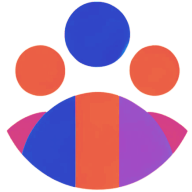A Successful Diversity and Inclusion Initiative: One Example
Diversity and inclusion initiatives are reshaping the modern workplace, but what does a successful program look like in practice? This article explores a real-world example, drawing on insights from industry experts and leaders. From apprenticeships to mentorship programs, discover how one organization transformed its culture and boosted innovation through strategic inclusivity efforts.
- Apprenticeships Create Diverse Leadership Pathways
- Overhauling Hiring Process Boosts Inclusive Innovation
- Mentorship Program Drives Career Growth
- STEM Mentorship Fosters Community for Women
- Employee Resource Group Enhances Inclusive Culture
Apprenticeships Create Diverse Leadership Pathways
Our most successful diversity initiative was partnering with a local community college to create paid roofing apprenticeships specifically targeting underrepresented groups in construction. What made it successful was going beyond just hiring—we implemented a mentorship structure where each apprentice works directly with a senior roofer who provides both technical training and career guidance. The program's success is evident in our retention rates; 85% of apprentices complete the program and 70% remain with us long-term. The key was creating genuine pathways for advancement rather than just entry-level opportunities, resulting in a more diverse leadership team that brings valuable new perspectives to our projects.

Overhauling Hiring Process Boosts Inclusive Innovation
One of the most meaningful diversity and inclusion initiatives I've led at Nerdigital was the restructuring of our hiring and onboarding process to ensure we were actively reducing unconscious bias and creating opportunities for underrepresented talent in digital marketing and tech.
The process started with recognizing that good intentions weren't enough. We had a fairly diverse team on paper, but when I looked closer, I realized we were still unintentionally recruiting from a narrow circle—same schools, same networks, same industry circles. That kind of homogeneity limits innovation. So, we took deliberate steps to change that.
We overhauled our job descriptions to focus on core competencies rather than overly rigid qualification lists that tend to exclude people who may not have had traditional access to the same opportunities. We also removed names and personal identifiers during the initial resume review stage and introduced structured interview questions to help eliminate subjectivity. And critically, we started building partnerships with organizations that support diverse professionals in marketing and tech, which helped us expand our pipeline in a meaningful way.
But what made this initiative successful wasn't just the process—it was the commitment across the team. We brought in outside trainers to lead unconscious bias workshops and made space internally for open, sometimes uncomfortable, conversations about equity, representation, and culture. It wasn't a checkbox exercise; it became part of who we are and how we operate.
The results were clear: our hiring pipeline became more diverse, but more importantly, the ideas and creativity within the company became richer. People felt more seen, more heard, and more empowered to contribute fully. And from a business standpoint, it translated into better campaigns, stronger client relationships, and ultimately, better performance.
If I've learned anything, it's that diversity and inclusion work isn't a one-time initiative—it's an ongoing process that requires reflection, transparency, and a willingness to evolve. When you build a culture where people truly feel they belong, everyone wins.

Mentorship Program Drives Career Growth
Back at my last job, I helped roll out a mentorship program called 'Diverse Voices'—it was a game changer. We matched senior leaders with underrepresented employees, and I put together a curriculum that focused on skills, networking, and personal growth. We tracked progress through surveys before and after the program, and the results were incredible. Over 90% of mentees felt more supported, and 60% saw career growth within a year. We also revamped our hiring process by implementing blind resume screening and diverse interview panels to reduce unconscious bias. Within six months, the number of diverse candidates in our applicant pool jumped by 50%, leading to a 30% increase in diverse hires. Employee satisfaction surveys showed a noticeable improvement in how employees viewed the company's commitment to diversity and inclusion. This initiative not only boosted our diversity metrics but also fostered a more inclusive environment that encouraged innovation and collaboration among employees.

STEM Mentorship Fosters Community for Women
A successful diversity and inclusion initiative I was part of focused on creating an inclusive mentorship program for women in STEM fields. The program paired junior and senior women in STEM roles with mentors to provide guidance, support, and networking opportunities. It created a structured space for knowledge sharing, boosted confidence among early-career professionals, and helped increase retention by fostering a strong sense of community and belonging.
What made this initiative successful was a structured, ongoing mentorship process that ensured consistent support and goal-setting. Equally important was the emphasis on building authentic relationships, which fostered trust and open communication. The strong commitment from both junior and senior leaders helped sustain engagement and created a culture where mentorship was genuinely valued across the organization.

Employee Resource Group Enhances Inclusive Culture
One successful diversity and inclusion initiative I was part of involved creating an employee resource group (ERG) for underrepresented employees at a previous company. The goal was to provide a platform for employees from diverse backgrounds to connect, share experiences, and offer feedback on how the company could improve inclusivity. What made this initiative successful was the executive support we received. Leaders not only endorsed the group but actively participated in meetings and discussions, showing a genuine commitment to making inclusivity a priority. We also implemented mentorship programs within the ERG to ensure underrepresented employees had access to leadership opportunities and professional development. The initiative created a space where employees felt heard and valued, leading to improved morale, higher retention, and a more inclusive company culture. It was successful because it wasn't just a one-time effort—it was a sustained, well-supported initiative that encouraged ongoing dialogue and tangible actions toward inclusivity.


